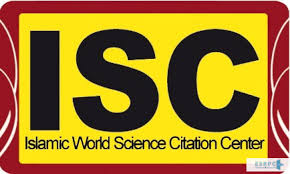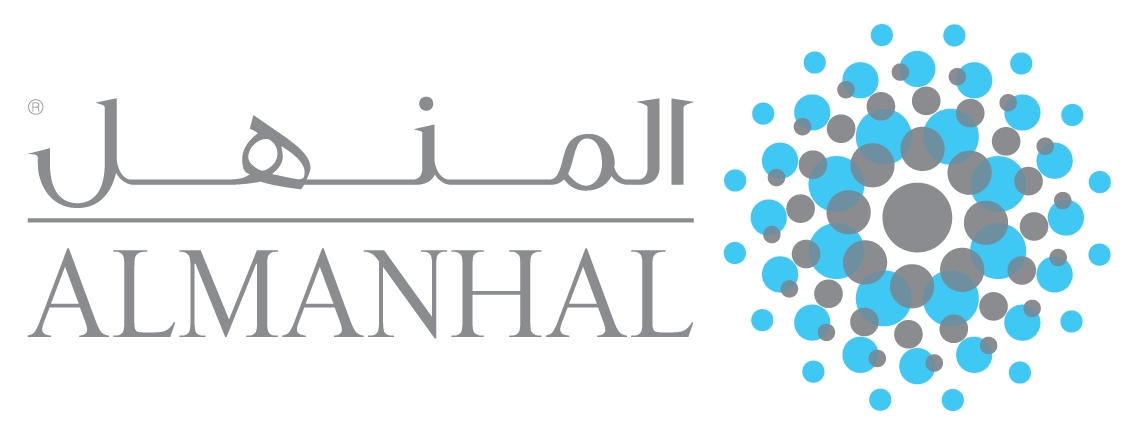The Effect of Utilizing Zakat Fund on Financing Production to Achieving Social Welfare: in Indonesia as a Case Study
DOI:
https://doi.org/10.31436/jif.v10i.524Abstract
Indonesia has tremendous potential for the development of Islamic social finance. Besides having the largest number of Muslims in the world, Indonesia is also the most generous country in the world (World Giving Index 2018). However, the reality in the field of management of Islamic social finance, especially Zakat, is still far from expectations. It was projected that in 2018, Indonesia would be able to collect only 28% of the total potential Zakat funds. This situation was compounded by the fact that only 84% of the collected funds were distributed (BAZNAS 2019). One of the reasons was the absence among the Zakat institutions of efficient Zakat programs that are in line with the needs of the community. Therefore, there is an urgent need for synergy between Zakat institutions and Islamic microfinance institutions that are experienced in developing SMEs, which are mostly under-funded. This paper will discuss the synergy scheme between Zakat institution and Islamic microfinance in maximizing the distribution of productive Zakat to the public. This paper uses qualitative methods, analyzing references from journals, Zakat institutions' reports and other related literature. From this current research it is found that the management of productive Zakat funds in Indonesia is still not unsatisfactory, as evidenced by the low distribution rate of Zakat funds. This paper provides recommendations so that Zakat and Islamic microfinance institutions can work together in the management of productive Zakat that reaches the targeted poor and alleviates poverty and enhance community welfare.
Downloads
References
Ahmed, H. (2002). Financing Microenterprises: An Analytical Study of Islamic Microfinance Institutions. Islamic Economic Studies, 9(2), 27-64.
Ahmed, H. (2004). Role of Zakah and Awqaf in Poverty Alleviation. Jeddah: Islamic Research and Training Institute, Islamic Development Bank.
Ahmed, H. (2002). Financing Microenterprises: An Analatical Study Of Islamic Microfinance Institutions. 9(2).
Asnaini. (2008). Productive Zakat of Baznas Yogyakarta on the Growth of Micro Business.
Atabik, A. (2015). Peranan Zakat Dalam Pengentasan Kemiskinan. Jurnal Zakat Dan Wakaf, 2(2).
Bahri, E., Aslam, M., Hasan, A., & Wibowo, H. (2019). Maqasid Al-Shariah in Micro-entrepreneurs Development: an Overview. International Conference of Zakat, 258–267. https://doi.org/10.37706/iconz.2019.182.
BAZNAS. (2015). Buku statistik Zakat Nasional 2015. Buku Statistick Zakat Nasional, 46.
BAZNAS. (2020). Indonesia Zakat Outlook 2020.
Beik, I. (2019). Measurement of Zakat Impact Through Sustainable Livelihood Impact Assessment on Balai Ternak in Tanah Datar.
Rachmawatia, E., & Azmansyah, T. (2019). ANalasis Zakat Produktif Dan DampaknyaTerhadap Pertumbuhan Usaha Mikro Dan Penyerapan Tenaga Kerja Serta Kesejahteraan Mustahik Di Kota Penkanbaru Provinsu Riau. Jurnal Ilmu Manajemen Http://Jurnal.Um-Palembang.Ac.Id/Ilmu_manajemen, 8(2), 1–14. https://doi.org/10.32502/jimn
Fahrudin, A. (2012). Introduction to Welfare. Bandung (ID): PT Rafika Aditama.
Farah, M. (1997). Al-Tawjih Al-Istithmari li Al-Zakah Dirasa Iqtisa Diyya Fiqhiyya Tahli Liyya Muqarana. Madbaca Bank Dubai Islamy, Dubai, UAE.
Firdaus, M. (2012). Economic Estimation and Determinations of Zakat Potential in Indonesia. researchgate.
Firmansyah. (2013). Zakat Sebagai Instrumen Pengentasan Kemiskinan dan Kesenjangan Pendapatan. Jurnal Ekonomi Dan Pembangunan, 21(2), 179–190. https://media.neliti.com/media/publications/77924-ID-Zakat-sebagaiinstrumen-pengentasan-kemi.pdf
Fitri, M. (2017). Pengelolaan Zakat Produktif sebagai Instrumen Peningkatan Kesejahteraan Umat. Economica: Jurnal Ekonomi Islam, 8(1), 149–173. https://doi.org/10.21580/economica.2017.8.1.1830
Gina, W., & Effendi, J. (2015). Financing Program in Microfinance Institution (LKMS) of Welfare Enhancing for Micro Business Enterprises (Study Case in B.M.T. Baitul Karim Bekasi). Jurnal Al-Muzara'ah, 3(1), 33–43. https://doi.org/10.29244/jam.3.1.34-43
Haryo, A. (2000). Indonesia's recovery: exports and regaining competitiveness. The Developing Economies.
Hendri N., & Suyanto. (2015). Analisis Model-Model Pendayagunaan Dana Zakat dalam Pemberdayaan Masyarakat Miskin Kota di Provinsi Lampung. AKUISISI, 11(2).
Jalaludin. (2012). Pengaruh Zakat Infaq Dan Sadaqah Produktif Terhadap Pertumbuhan Usha Mikro Dan Penyerapan Tenaga Kerja Kesejahteraan Mustahik. Majalah Ekonomi, 3, 270–277.
Khan, A. (2008). Islamic Microfinance, Theory, Policy and Paractice.
Lubis, M. (2018). Towards Achieving the Efficiency in Zakat Management System: Interaction Design for Optimization in Indonesia. researchgate.
Madani, El. 2013. Fiqh Zakat. Yogyakarta: Diva Press.
Malcolm, P. (1977). The Cambridge History of Islam. U.S.A.: Cambridge University Press.
Mubasirun, M. (2013). Distribusi Zakat Dan Pemberdayaan Ekonomi Umat. Inferensi, 7(2), 493. https://doi.org/10.18326/infsl3.v7i2.493-512
Noone, S. (2011). The Growth and Development of the Indonesian Economy. R.B.A.
Nopiardo, W. (2016). Mekanisme Pengelolaan Zakat Produktif Pada Badan Amil Nasional Tanah Datar. JEBI (Jurnal Ekonomi dan Bisnis Islam), 186.
Nurzaman, M. (2010). Zakat and Human Development An Empirical Analysis on Poverty Alleviation in Jakarta, Indonesia. International Conference on Islamic Economics and Finance. Indonesia: Research and Community Service University of Indonesia.
Obaidullah, M. (2008). Role of Microfinance in Poverty Alleviation: Lessons from Experiences in Selected IDB Member Countries (Issue August). https://doi.org/978-9960-32-175-2
Prahesti, D., & Putri, P. (2018). Pemberdayaan Usaha Kecil dan Mikro melalui Dana Zakat Produktif. Ilmu Dakwah: Academic Journal for Homiletic Studies, 12(1), 141–160. https://doi.org/10.15575/idajhs.v12i.190
Pratama, Y. (2015). Peran Zakat Dalam Penanggulangan Kemiskinan. The Journal of Tauhidinomics, 1(1), 93–104.
Purbasari, I. (2018). Zakat in Indonesian State Treasury Funds: Its Potential Obstacle and Abuse. I.O.P. Publishing.
Qadir, A. (2001). Zakat dalam Dimensi Mahdhah dan Sosial, cet. 2. Jakarta: PT Raja Grafindo Persada.
Qardawi. (2005). Zakah management for poverty alleviation in Indonesia and Brunei Darussalam.
Quraisy, M., Hamzah, S., & Razak, A. (2017). The Impact of Islamic Microfinance in Enhancing The Well-Being And Quality of Life : Case Study of Islamic Financial Cooperative (B.M.T.) in Indonesia. South East Asia Journal of Contemporary Business, Economics and Law, 13(3), 1–12.
Riyadi, A. (2019). Penguruh Lembaga Keuangan Mikro Syariah (LKMS) Berkualitas Terhadap Peningkatan Keuntungan Usaha Mikro Kota Depok. Psikologi Perkembangan, 6(5), 1086–1100. https://doi.org/10.1017/CBO9781107415324.004
Rofiah, K. (2011). Peran Lembaga Keuangan Mikro Dalam Pemberdayaan Ekonomi Masyarakat Di Kabupaten Ponorogo. Kodifikasia, 5(1). https://doi.org/10.21154/kodifikasia.v5i1.223.
Routledge, R. (2014). Indonesia's Ways to Sustainable Economic Growth and Development. . researchgate.
Rozalinda. (2014). Persepsi Perempuan Tentang Perceraian di Kota Padang. MIQOT: Jurnal Ilmu-ilmu Keislaman, 38(2).
Sartika, M. (2008). Pengaruh Pendayagunaan Zakat Produktif terhadap Pemberdayaan Mustahiq pada LAZ Yayasan Solo Peduli Surakarta. Jurnal Ekonomi Islam La Riba Vol. II, No. 1, Juli 2008.
Smolo, E., & Ismail, A. (2011). A theory and contractual framework of Islamic micro-financial institutions operations. Journal of Financial Services Marketing, 15(4), 287–295. https://doi.org/10.1057/fsm.2010.24
Sulistiyani. (2004). Empowerment of Mustaḥiq Zakat Model Towards Business Independency.
Sunarti, E. (2006). Indikator Keluarga Sejahtera: Sejarah Pengembangan, Evaluasi, dan Keberlanjutannya.
Tabor, S. (2015). Constraints to Indonesia's Economic Growth. A.D.B.
Tambunan, T. (2009). MSME in Indonesia. Bogor (ID): Ghalia Indonesia.
Wahid, H. (2016). A proposal of localization of Zakat distribution in Malaysia: Do amil is ready? researchgate.
Wulansari, S., & Setiawan, A. (2014). Analisis Peranan Dana Zakah Produktif terhadap Perkembangan Usaha Mikro Mustahiq (Studi Kasus Rumah Zakah Kota Semarang). Diponegoro Journal of Economics, 3(1), 1-15.
Yasir. (2014). Pola Distribusi Zakat Produktif: Pendekatan Maqasid Syariah dan Konsep CSR. Media Syari’ah, 16(1), 207-230.












